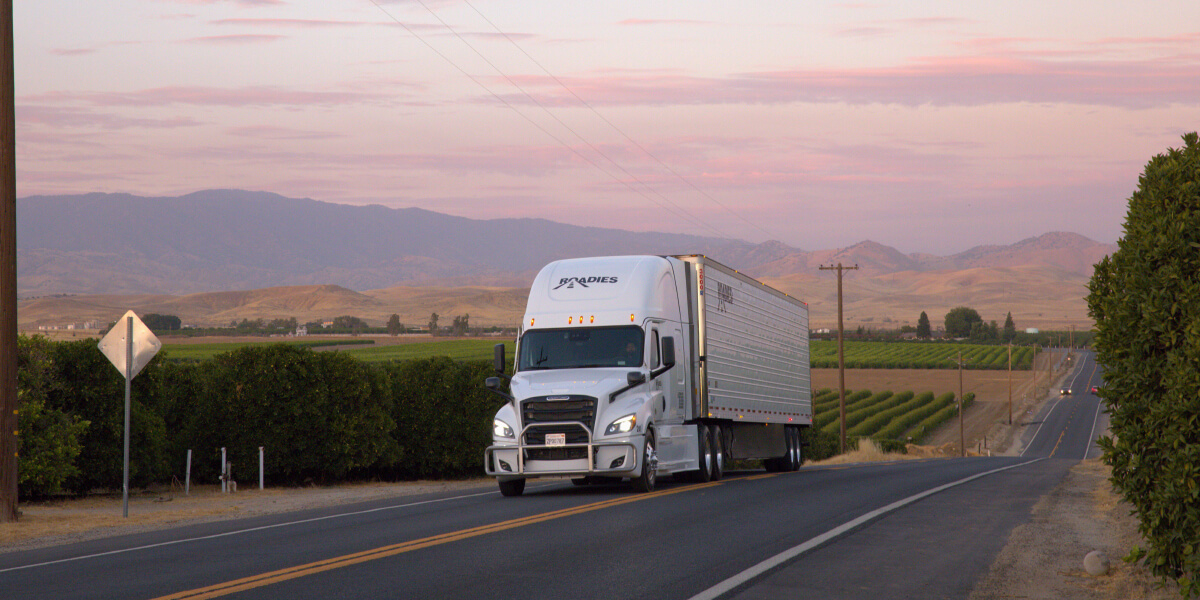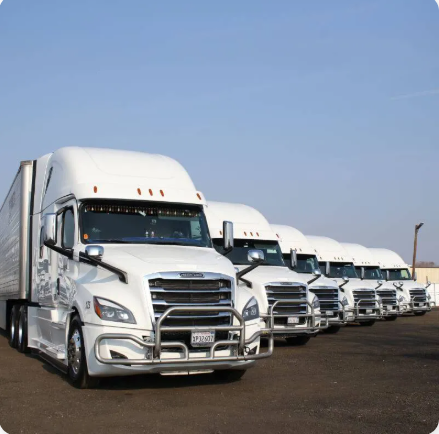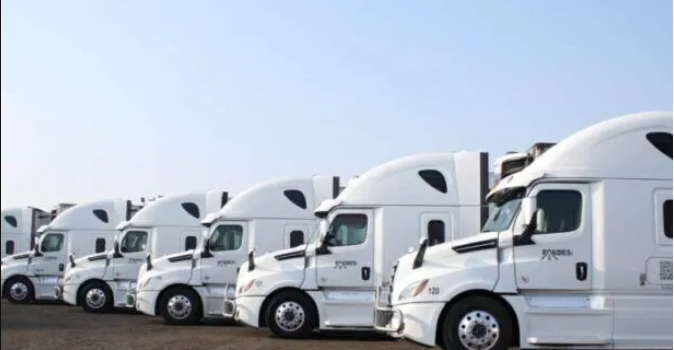In today’s fast-moving freight world, staying on top of every load, every route, and every delivery is no longer a luxury—it’s a necessity. As a freight broker, you’re the critical link between shippers who need to move goods and carriers who get the job done. But let’s be real: logistics can be unpredictable. Shipments get delayed, trucks take the wrong exit, paperwork gets missed, customers get nervous—and all of it ends up on your shoulders.
The pressure to deliver on time, every time, has never been higher. That’s why freight brokers across the USA are turning to technology not just to survive—but to thrive. And one of the most powerful tools in your modern freight toolbox is GPS fleet tracking.
It goes beyond simply being able to locate a truck. It’s about staying one step ahead of delays, keeping your clients informed without a dozen phone calls, and offering the kind of real-time insight that builds serious trust. GPS tracking gives brokers something every business needs: visibility, control, and peace of mind.
Whether you’re a seasoned pro with years of lane experience or a newcomer working to gain an edge, GPS tracking can streamline your operations, reduce chaos, and help you grow your freight brokerage with confidence.
In this blog, we’ll explore exactly how freight brokers in the USA can harness GPS tracking to improve efficiency, cut costs, and provide a better experience—for carriers, customers, and you.
What Is GPS Fleet Tracking? (Quick Refresher)
At its core, GPS fleet tracking is technology that lets you monitor the real-time location, movement, and status of trucks and trailers. It works through a mix of satellites, software, and on-vehicle hardware to give you up-to-the-minute updates on:
- Where a vehicle is
- How fast it's moving
- Which route it's taking
- When it stops or idles
- Estimated time of arrival (ETA)
Many systems go even deeper—offering insights into fuel usage, driver behavior, maintenance needs, and even temperature control for sensitive cargo.
Why Should Freight Brokers in the USA Care About GPS Tracking?
Some may ask, “GPS is for carriers, right? What does it have to do with me as a broker?” Here’s the truth: freight brokers sit at the heart of the entire logistics process, coordinating between shippers and carriers.Your performance—and reputation—will improve with greater knowledge and control.
You can improve your operations by using GPS tracking in the following ways:
1. Real-Time Visibility Means Real-Time Answers
Not being able to locate a shipment is one of the most annoying things about freight. When a customer calls asking for an update and you have no clue, that’s a stressful spot to be in.
With GPS tracking, you can:
- See exactly where every truck is
- Share live ETAs with your clients
- Proactively alert them of delays or detours
- Avoid calling carriers for updates every hour
This real-time visibility builds trust with your shippers. Instead of vague guesses, you’re delivering concrete answers. That’s a big win in a world where reliability matters.
2. Fewer Delays, Fewer Headaches
Delays can snowball into major disruptions—especially in time-sensitive industries like retail, food, and pharmaceuticals.
GPS tracking helps prevent common causes of delays by:
- Recognizing whether a truck has been idle for an extended period of time or is stalled in traffic
- Suggesting faster alternate routes
- Notifying a driver if they stray off the path
- Assisted drivers in avoiding adverse weather or road closures.
As a broker, having access to this data means you can act fast, reroute, and keep things on schedule. You’re not just reacting—you’re staying ahead.
3. Better Communication with Carriers
You rely on carriers to get the job done—but they also rely on you to coordinate effectively. When you use GPS tracking, you’re not micromanaging drivers—you’re supporting them with better information.
For example, you can:
- Help carriers avoid fines or violations by warning them of HIS limits
- Alert them to fuel-efficient routes
- Provide support if there’s a breakdown or roadside emergency
This fosters better broker-carrier relationships. When drivers and dispatchers see that you’re proactive and helpful, they’re more likely to work with you again.
4. Happier Shippers, Stronger Relationships
Your shippers want one thing: on-time, reliable service. They don’t want excuses. GPS tracking allows you to provide them piece of mind with:
- Real-time delivery updates
- Transparent tracking links they can check themselves
- Automatic notifications for arrival, delay, or delivery confirmation.
All of this contributes to an improved client experience. And when customers are happy, they stick around—and refer others.
5. Enhanced Security and Loss Prevention
Theft and cargo loss are real concerns, especially in high-value or high-risk lanes. GPS tracking increases security by:
- Monitoring unauthorized stops
- Alerting whenever a vehicle departs from its designated route.
- Providing breadcrumb trails if something goes missing
- Enabling geofencing to detect entry or exit from specific zones
As a broker, this gives you a stronger sense of control and adds confidence for clients shipping sensitive or valuable goods.
6. Better Load Planning and Optimization
More data equals better decisions.
With access to GPS data across different loads and carriers, you can:
- Analyze delivery times and plan better routes
- Avoid known traffic bottlenecks
- Identify which carriers are consistently reliable
- Optimize pickups and drop-offs using real-time patterns.
Over time, this kind of insight leads to smarter logistics and reduced costs for everyone involved.
7. Reduced Claims and Disputes
How many times have you dealt with a “he said, she said” argument between a shipper and a carrier?
GPS tracking clears the air. You can use historical data to confirm:
- Whether a driver followed the agreed route
- How long cargo was in transit
- When a truck arrived or left a site.
This reduces friction, shortens claim times, and protects your business from unnecessary losses.
8. Competitive Advantage in a Crowded Market
Let’s be honest—freight brokerage is competitive. There are thousands of brokers in the USA, and customers want partners who bring something extra to the table.
Offering GPS-powered tracking and visibility can be your edge. It shows that you’re:
- Tech-savvy
- Proactive
- Focused on service and transparency
This sets you apart from brokers who still rely on manual phone calls and outdated systems.
How to Start Using GPS Tracking as a Freight Broker
You don’t need to install GPS on every truck yourself. Many options are available:
Offering GPS-powered tracking and visibility can be your edge. It shows that you’re:
- 1. Partner with Carriers Who Use GPS: Work with fleets that already have GPS and request tracking access.
- 2. Use Broker-Friendly Platforms: Some logistics platforms offer shared GPS visibility through integrations (like FourKites, Project44, Macropoint).
- 3. Offer GPS Trackers for Key Loads: For high-value shipments, consider leasing GPS trailers or container trackers.
- 4. Integrate GPS into Your TMS: Many transportation management systems (TMS) integrate directly with GPS data to keep everything in one dashboard.
This sets you apart from brokers who still rely on manual phone calls and outdated systems.
Final Thoughts: Tracking Isn’t Just for Trucks—It’s for Better Brokerage
GPS fleet tracking isn’t just a tool for carriers—it’s a strategic advantage for freight brokers who want to stay competitive, efficient, and reliable. In an industry where one late delivery can strain a client relationship, having real-time visibility gives you an edge that goes beyond just moving freight—it shows you’re proactive, professional, and in control.
As a freight broker, your real value lies in how well you coordinate, communicate, and deliver results—day in and day out. GPS tracking empowers you to do all three better. You’re not just reacting to problems anymore; you’re preventing them before they happen. You’re not chasing updates; you’re sharing answers. You’re not guessing; you’re making informed, data-backed decisions.
Whether you’re managing five loads or fifty, whether you’re brokering local hauls or coast-to-coast shipments, the clarity GPS tracking brings to your workflow is worth its weight in gold. It keeps you informed, keeps your customers reassured, and keeps your business growing in the right direction.
In a freight market that demands speed, transparency, and reliability—GPS tracking is no longer a bonus. It’s a must.
So if you’re ready to run smoother operations, build stronger relationships, and stand out in a crowded logistics field, it’s time to bring GPS technology into your freight brokerage. The difference it makes? You’ll feel it in every load you move.
FAQ: Freight Brokers & GPS Tracking
No. You can use platforms that share GPS data from carrier systems or rent GPS devices for specific loads.
It depends on the solution, but many systems offer affordable options or per-load pricing that scales with your business.
No. It focuses on shipment location and route data—not personal or sensitive driver information. It’s meant to enhance logistics, not micromanage.
Time-sensitive, high-value, temperature-controlled, or long-haul shipments are especially ideal for GPS tracking.
Yes. Many modern GPS systems integrate with popular TMS platforms or can be connected via APIs.





